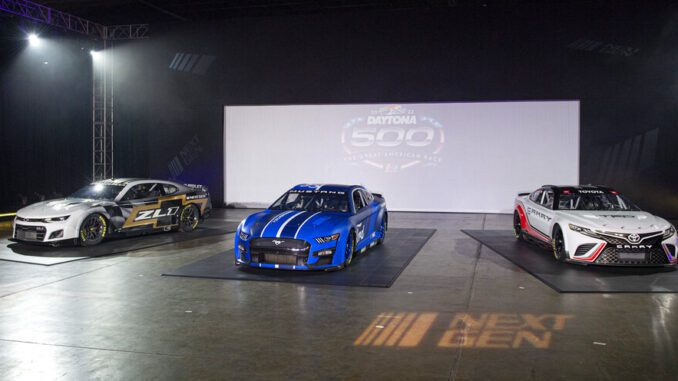
North State Journal’s Newcomer of the Year is often either a teenager or 20-something who bursts on the North Carolina sports scene on an inevitable path to superstardom or a new coach brought in to turn around a team or replace a legend.
The staff’s prediction to emerge in 2022 has been talked about for years but technically hasn’t even had its first birthday. It’s also one of the fastest inanimate objects in sports.
Get ready for NASCAR’s Next Gen car.
The stock car racing governing body has often changed rules to increase safety and foster more competition, whether it was better chassis to keep drivers safe in accidents, restrictor plates to slow cars — and create pack racing — at superspeedways or changing how champions are crowned by adding and frequently tweaking an end‑of-season playoff system.
But with costs climbing, sponsors dwindling, ratings dropping and attendance tumbling at racing weekends across the country, NASCAR reimagined how teams build their cars and the costs associated with team ownership with its 2019 rules package.
The Next Gen car, from a technical standpoint, has several changes.
Among them is increased downforce created by adopting a rear diffuser, a first for NASCAR. The cars will also go from four-speed to five-speed manual transmissions and will use a transaxle — a combination transmission and rear axle unit — for the first time. The cars also add new features that are more associated with other forms of auto racing, such as single lug nuts on larger 18-inch wheels (up from 15 inches) and driver seats moved closer to the center of the car to enhance safety.
And while speeds will be similar (670 horsepower) the cars will have a much different look and feel. Aerodynamic packages will also vary from track to track, ending an era where teams used similar cars for all tracks of similar sizes.
“It accelerates quick, it stops quicker, it turns quicker, it’s nimble,” Kurt Busch, who is joining the Michael Jordan/Denny Hamlin-owned 23XI Racing in 2022, said after testing the car at Charlotte Motor Speedway in November. “I don’t want to use the word ‘steroids’ — it’s just the car is more effective, and the car is more sensitive to changes and to feel. … You feel everything more vividly.”
Initially planned to roll out in 2021, the Next Gen car’s arrival was pushed back a year because of the coronavirus pandemic. But that didn’t stop a lot of new faces from jumping into NASCAR.
Of course there was Jordan, who teamed up with Hamlin and brought on the Cup Series’ only black driver, Bubba Wallace, to pilot their new No. 23 car. 23XI Racing then obtained a second NASCAR charter, which guarantees teams a spot in every points race, and put Busch in that car. Other newer teams like Trackhouse Racing (Nos. 1 and 99) and Kaulig Racing (Nos. 16 and 31) added charters to create multicar teams.
The reason for all this interest? The lowered cost associated with the Next Gen cars is expected to close the competitive gap and allow smaller teams to compete with powerhouses like Hendrick Motorsports, Joe Gibbs Racing, Stewart Haas Racing and Team Penske.
NASCAR teams, rather than fabricating their own chassis and building their own parts, will buy everything, except for engines and body panels, from about two dozen suppliers. Think of it as the same system that has Goodyear supplying tires for all teams, but instead for most of the cars’ components.
That means fewer jobs in NASCAR garages — most of which are in and around Mooresville — and more affordable team ownership. But those savings won’t come until later because teams are building their seven-car fleets from scratch for this year, and there will certainly be a learning curve with all this new technology.
In an ever-changing sports landscape, NASCAR is trying to regain its footing and stay relevant. It starts with the Next Gen car’s debut in February.
“The bottom line of all this, and you’ll hear this from the drivers, is that this package with the Next Gen car puts it back in the drivers’ hands,” said Steve O’Donnell, NASCAR executive vice president and chief racing development officer, “and we’re excited about what that will do in 2022, for sure.”



